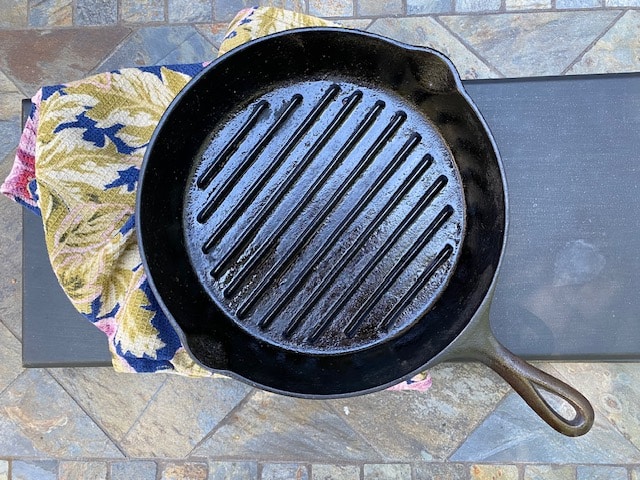Cast-iron skillets with raised ridges are intended for indoor use, to imitate some of the flavor and look of foods grilled outdoors. While such a pan won’t replicate the smokiness of an outdoor fire, the ridges will make charred bars across the food that add visual appeal and grilled flavor.
Like other cast-iron pans, ridged skillets work best when well seasoned. Many cast iron pans are sold pre-seasoned and ready to use. Wash a new pan to remove any protective coating, then dry it thoroughly.
To prepare an unseasoned pan, coat it lightly on all sides with vegetable oil, put it in a hot oven until well heated, then let it cool. It takes time and repeated use for an unseasoned pan to develop a patina, but eventually a well-cared-for iron skillet becomes virtually nonstick.
To use a ridged skillet, place it over medium-high heat until hot. Spray the interior with vegetable oil or olive oil cooking spray. (Don’t pour in oil, which is difficult to apply to the ridges of a hot pan and will splatter if too much is used.) Lightly oil the food to be cooked in the pan, and spread it evenly across the ridges. When one side is done, use a spatula to turn and sear the other side.
To clean a newly seasoned pan, scrape off food residue with coarse salt and a plastic scrubber, but avoid using soap or detergent. Once a cast-iron skillet is well-seasoned (it will eventually take on a black gloss), it’s fine to wash it with a soapy sponge as long as you don’t soak it or scrub off the patina. Be sure to dry it well.
My favorite recipe using a ridged skillet is for Pan-Grilled Chicken with Sundried Tomatoes and pine nuts, an easy recipe that comes together in about 20 minutes, with leftovers that make an outstanding chicken salad.


